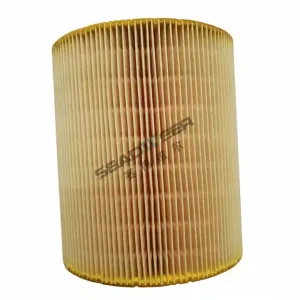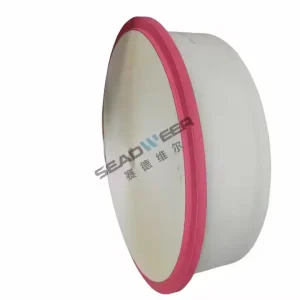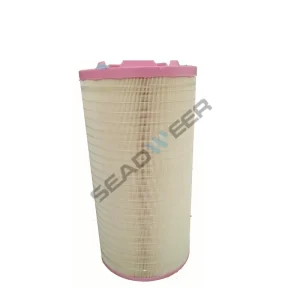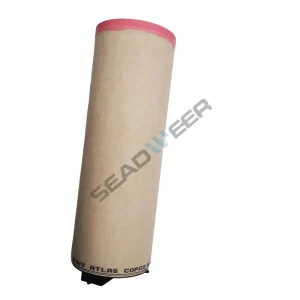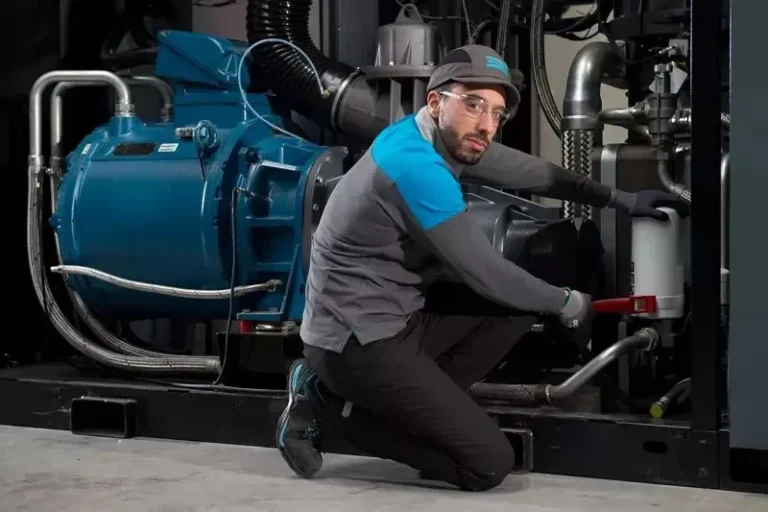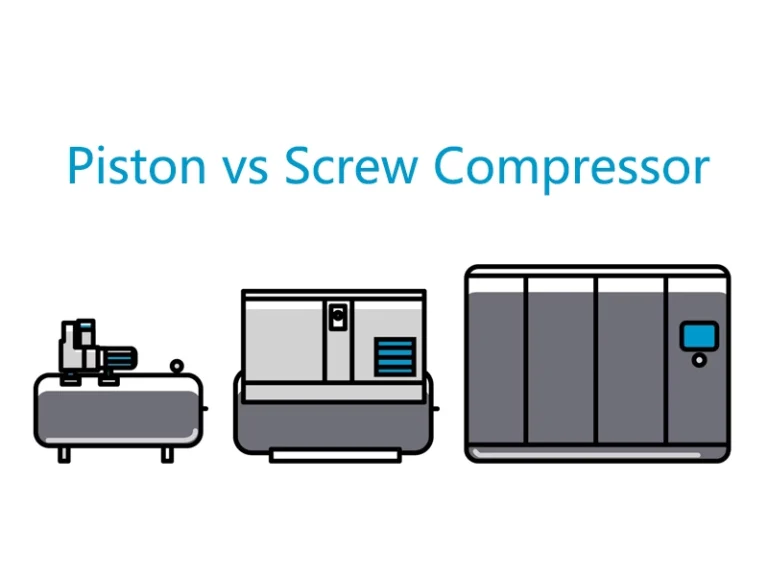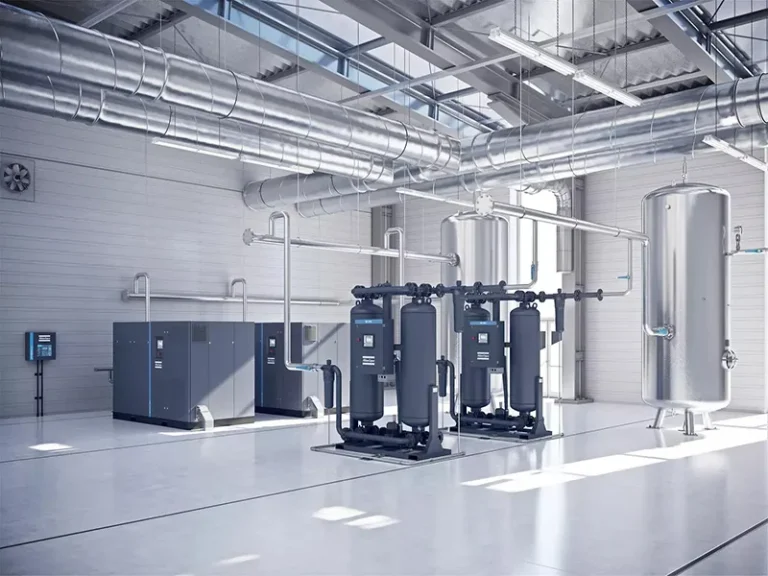Compressed air serves as a foundational utility across a vast spectrum of industries, providing the power for an array of tools, driving intricate machinery, and upholding the precision demanded by modern manufacturing processes 1. However, the very air that fuels these operations often carries an invisible burden: a mixture of contaminants such as dust, oil mist, and vapors 1. These impurities, if left unchecked, can inflict significant damage on equipment and compromise the quality of finished products 1. The critical component that stands as the first line of defense against these threats is the air filter cartridge. Designed to meticulously remove harmful substances from the compressed air stream, these cartridges are indispensable for ensuring both the cleanliness and the efficiency of the entire system 1. This report will explore the diverse and crucial impacts of air filter cartridges on compressed air systems, examining their role in maintaining air quality, optimizing energy consumption, safeguarding downstream equipment, and the financial repercussions of neglecting proper filtration.

The primary function of an air filter cartridge is to ensure the quality of the compressed air by removing various contaminants that originate from both the intake air and the compression process itself. These contaminants can be broadly categorized into solid particles, liquids, and vapors. Solid particles, including dust, dirt, and rust, are often drawn into the system from the surrounding environment or generated through the internal workings of the compressor 2. It is noteworthy that a single cubic foot of compressed air can contain millions of these particulate contaminants. Liquids, primarily water and oil, are introduced as water vapor that condenses during the compression cycle or as oil carryover from lubricated compressors 1. Finally, vapors, mainly oil vapors from the compressor lubricant, can also permeate the compressed air stream 1.
Different types of air filters within the cartridge are engineered to target these specific contaminants with varying degrees of efficiency. Particulate filters are designed to capture solid particles. Water separators, a type of particulate filter, can remove particulates down to 10 microns. More advanced particulate filters utilize porous media to trap finer particles 2. Standard dry particulate inline filters can achieve a removal rate of particles down to 3 microns with an impressive 99.99% efficiency . For applications demanding the highest levels of cleanliness, some particulate filters can offer removal efficiencies reaching 99.9999% . In contrast, air compressor intake filters, acting as pre-filters, typically capture larger particles in the 4-10 micron range with an efficiency of 90-95% . This tiered approach to filtration, with varying levels of efficiency depending on the filter’s position in the system, ensures that the most critical downstream components receive the cleanest air possible.
Coalescing filters play a vital role in removing liquid contaminants, specifically oil and water aerosols. These filters are highly effective at capturing fine mists and aerosols, often filtering down to 0.01 microns. High-performance coalescing filters can achieve removal efficiencies of up to 99.99% for particles and droplets as small as 0.01 microns . Some high-efficiency coalescing filters can even reach a 99.999% efficiency for particles down to 0.01 microns and reduce oil carryover to an extremely low 0.008 parts per million (PPM) . This level of filtration is crucial in preventing oil contamination in sensitive industrial processes.
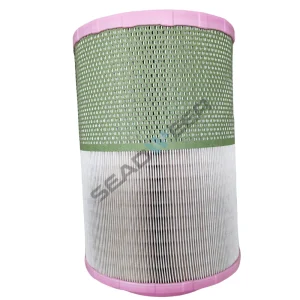
Activated carbon filters are employed to remove vapor-phase contaminants, primarily oil vapors and odors. These filters utilize adsorption to capture these impurities, and certain types can adsorb up to 99.9999% of oil vapors 7. They can effectively reduce oil vapor content to as low as 0.003 PPM. However, it is important to note that the efficiency of activated carbon filters can vary depending on the specific filter design and operating conditions, with reported efficiencies ranging from 4.6% to 98%. The selection of the appropriate filter type or a strategic combination of these filters is paramount for achieving the desired air quality standards required by different industrial applications. Industries such as pharmaceuticals, food processing, and electronics, where even trace amounts of contamination can compromise product integrity, rely heavily on these high-efficiency filtration solutions 1.
Beyond maintaining air quality, air filter cartridges exert a significant influence on the energy efficiency of a compressed air system. As compressed air flows through a filter, it encounters resistance, resulting in a pressure drop across the filter element . This pressure drop necessitates the compressor working harder to maintain the required pressure downstream, leading to increased energy consumption. A clogged filter exacerbates this issue, causing a more substantial pressure drop and forcing the compressor to consume even more power . Studies indicate that a pressure drop of just 10 pounds per square inch gauge (psig) can lead to a 5% increase in energy costs for the compressed air system. Furthermore, a general rule of thumb suggests that every 1 pound per square inch (PSI) of unnecessary pressure drop can increase energy costs by 0.5% . Conversely, clean filters offer minimal resistance to airflow, ensuring consistent system pressure and reducing energy waste . If a filter cartridge is not replaced regularly, it can become clogged, leading to a significant drop in air pressure and a dramatic increase in energy consumption and associated carbon dioxide emissions. Therefore, timely filter replacement is not only crucial for maintaining air quality and protecting equipment but also for effective energy management and cost control within the compressed air system.
Proper air filtration, facilitated by effective air filter cartridges, plays a critical role in protecting downstream equipment and extending its operational lifespan. Contaminants such as dust, moisture, and oil can inflict damage on sensitive pneumatic tools, valves, and cylinders by causing wear, corrosion, blockages, and general malfunctions. For instance, particulate contamination can cause valves to swell, leading to increased vibration and a reduction in the equipment’s service life. Moreover, particles can erode internal components, clog small orifices, and damage critical seals. Moisture in the compressed air can lead to corrosion and rust within pipes and can wash away essential lubricants in pneumatic tools and cylinders . By effectively removing these harmful contaminants, high-quality air filtration significantly extends the lifespan of downstream equipment and reduces the frequency and cost of maintenance 1. One case study from a manufacturing plant demonstrated that upgrading to higher-efficiency filters resulted in a remarkable 40% decrease in tool maintenance costs and a 20% reduction in equipment downtime within a year. This clearly illustrates the substantial financial benefits associated with investing in proper filtration, extending beyond energy savings to encompass reduced maintenance expenses and prolonged equipment life.
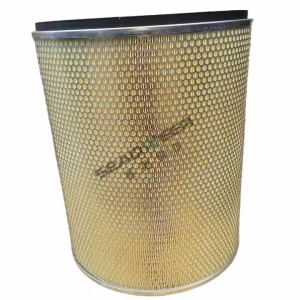
The selection of the appropriate air filter cartridge type is crucial for addressing specific contaminant challenges and achieving optimal system performance. Particulate filters, designed to remove solid particles like dust and rust, come in various efficiency ratings, ranging from basic intake filters to high-efficiency filters capable of capturing sub-micron particles 1. Coalescing filters are specifically engineered to remove oil mist, water droplets, and other fine aerosols, typically achieving high removal rates for very small liquid particles 1. Activated carbon filters are essential for removing oil vapors, hydrocarbons, and unwanted odors, ensuring the highest levels of air purity for sensitive applications 1. Notably, some advanced filter technologies, such as those found in certain coalescing filters, can achieve not only high air purity but also a 40% lower pressure drop and a corresponding 40% higher energy efficiency compared to conventional filters 19. Therefore, a thorough understanding of the types of contaminants present and the specific requirements of the application is fundamental to selecting the most effective filtration solution.
Neglecting the maintenance of air filter cartridges can lead to a cascade of costly consequences for a compressed air system. Clogged or ineffective filters can cause equipment to malfunction or fail prematurely, leading to unscheduled downtime and disruptions in production . The accumulation of contaminants within the system can also result in higher repair and replacement costs for pneumatic tools, machinery, and even the compressor itself 2. It is estimated that maintenance and repairs can account for approximately 12% of a compressed air system’s total lifetime cost . Furthermore, contaminated compressed air can directly impact the quality of manufactured goods, potentially leading to product defects, the need for rework, and increased rejection rates, particularly in industries with stringent quality standards 2. As previously discussed, poorly maintained filters also contribute to increased energy consumption due to the higher pressure drop, resulting in elevated operating costs 1. A 10 psig pressure drop caused by neglected filters can lead to a 5% increase in energy expenses . The combined financial burden of downtime, repairs, product quality issues, and increased energy usage significantly outweighs the relatively minor cost of regular filter replacement, underscoring the economic imperative of proactive maintenance.
Numerous case studies and industry reports provide compelling evidence of the tangible benefits of utilizing high-quality and well-maintained air filter cartridges in compressed air systems. For example, a manufacturing plant that upgraded its filters experienced a 40% reduction in tool maintenance costs and a 20% decrease in downtime . In the realm of HVAC systems, which share similar filtration principles, a music center that switched to low-pressure-drop filters achieved an impressive 80% reduction in filter change labor and a 34% decrease in energy costs . Hospitals employing low-pressure-drop filters have reported drops in HVAC energy costs ranging from 15% to 30%. One specific hospital saw a remarkable ~36% reduction in HVAC energy consumption after implementing optimized bag filters . Even at the individual filter level, a university realized energy cost savings of approximately $14 per filter per year by using a particular low-pressure-drop filter. On a larger scale, a plant using a specific filter combination achieved annual energy savings of around $33,000 , and a customer who upgraded their entire compressed-air system reported a 17% annual energy saving . These real-world examples underscore the significant cost savings and efficiency improvements that can be realized through a commitment to effective compressed air filtration. Moreover, general industry estimates suggest that optimizing compressed air systems can lead to energy savings of 20-50%, and over 50% of industrial plant air systems harbor opportunities for substantial energy savings .
In conclusion, air filter cartridges exert a profound and multifaceted impact on compressed air systems. They are indispensable for maintaining the quality of compressed air, which is critical for protecting downstream equipment and ensuring the integrity of manufactured products. Furthermore, properly functioning filters play a vital role in optimizing energy efficiency by minimizing pressure drop and reducing the workload on the compressor. Conversely, neglecting the maintenance and timely replacement of air filter cartridges can lead to increased downtime, higher repair costs, compromised product quality, and significantly elevated energy consumption. The selection of the correct type and grade of filter, tailored to the specific contaminants and application requirements, is paramount. Implementing a proactive maintenance schedule that includes regular inspection and replacement of filter cartridges is equally essential for ensuring optimal system performance and maximizing cost savings. Ultimately, investing in high-quality air filter cartridges and adhering to proper maintenance practices are fundamental for establishing a reliable, efficient, and cost-effective compressed air system that supports enhanced productivity and profitability.
Table 1: Efficiency of Different Air Filter Types in Removing Common Contaminants
| Filter Type | Primary Target Contaminant(s) | Efficiency (Typical Range) | Micron Rating (Typical Range) | Key Snippets |
| Particulate | Dust, Dirt, Rust | 90% – 99.9999% | 3 – 10 microns and below | 5 |
| Coalescing | Oil & Water Aerosols, Fine Particulates | Up to 99.999% | Down to 0.01 microns | 5 |
| Activated Carbon | Oil Vapors, Odors | Up to 99.9999% | Adsorption to 0.003 ppm | 5 |
| Water Separators | Bulk Liquids, Particulates | Not explicitly stated | Down to 10 microns | 5 |
Table 2: Impact of Pressure Drop on Energy Costs
| Pressure Drop Increase | Approximate Energy Cost Increase | Supporting Snippets |
| 1 PSI | 0.5% | 15 |
| 10 PSIG | 5% | 14 |
Table 3: Case Study Examples of Savings and Efficiency Improvements
| Industry/Scenario | Improvement/Saving | Percentage/Amount | Supporting Snippets |
| Manufacturing Plant (Upgraded Filters) | Decrease in tool maintenance costs | 40% | 7 |
| Manufacturing Plant (Upgraded Filters) | Drop in downtime | 20% | 7 |
| Music Center (Switched to Low-Drop Filters) | Reduction in filter change labor | 80% | 21 |
| Music Center (Switched to Low-Drop Filters) | Reduction in energy costs | 34% | 21 |
| Hospitals (Using Low-Pressure-Drop Filters) | Drops in HVAC energy costs | 15-30% | 21 |
| Hospital (Switched to Specific Bag Filters) | Cut in HVAC energy use | ~36% | 21 |
| University (Using Specific Low-Drop Filter) | Annual energy cost saving per filter | ~$14 | 21 |
| Plant (Using Specific Filter Combo) | Annual energy savings | ~$33,000 | 21 |
| Customer (Upgraded Compressed-Air System) | Annual energy savings | 17% | 22 |
| Filter Technology (Compared to Conventional) | Lower pressure drop | 40% | 19 |
| Filter Technology (Compared to Conventional) | Higher energy efficiency | 40% | 19 |
| Optimizing Compressed Air Systems (General Estimate) | Potential energy savings | 20-50% | 23 |
Contents
Reference
- What are Air Compressor Filter Cartridges? A Guide to Protecting Air …, https://www.controlgear.net/blog/what-are-air-compressor-filter-cartridges-a-guide-to-protecting-air-compressors-and-air-quality/
- Why do we need to filter compressed air? – Patton’s Inc, https://www.pattonsinc.com/blog/why-do-we-need-to-filter-compressed-air/
- The Impact of Clean Air: Why Quality Compressed Air Filters Matter, https://www.guru-technology.com/blog/why-compressed-air-filters-matter/
Related Products
-
1613872000 Air Filter for Atlas Copco Air Compressor
$30.00 – $100.00 -
1621138900 Air Filter for Atlas Copco Oil Free Air Compressor
$30.00 – $80.00 -
1630408099=1635040800 Air Filter for Atlas Copco
$30.00 – $50.00 -
2914502400 Air Filter for Atlas Copco Air Compressors
$15.00 – $50.00


